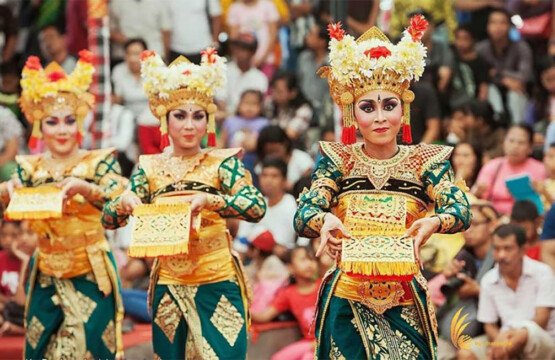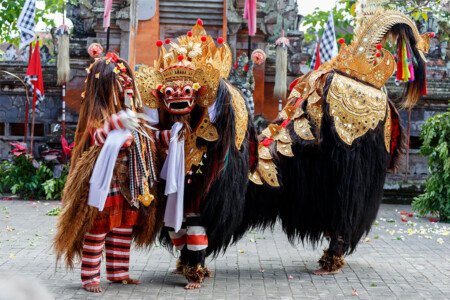Bali, often called the “Island of the Gods,” is a place where spirituality and culture are deeply intertwined with daily life. Among the many sacred traditions observed by the Balinese Hindu community, the Full Moon Ceremony—known locally as Purnama—stands out as one of the most vibrant and significant religious events on the island.
But what exactly happens during this mystical ceremony? Why is the full moon so important to the Balinese people? Let’s take a journey into the heart of Bali and uncover the fascinating rituals, spiritual meanings, and cultural expressions that unfold during the Full Moon Ceremony. 🌙🙏
The Spiritual Significance of the Full Moon in Bali 🌕
The Balinese calendar is deeply linked with lunar cycles. The full moon, or Purnama, is believed to be a time when divine energy is at its peak, making it an ideal moment for spiritual renewal and blessings. The bright, illuminating moon symbolizes clarity, purity, and the triumph of light over darkness—not just physically, but within one’s soul.
For the Balinese, the Purnama marks a sacred occasion to cleanse their minds, bodies, and environments from negativity, karma, and evil spirits. It is a time for community gathering, thanksgiving, and connection with the gods (known as Dewata) and ancestral spirits. The rituals performed during the full moon ceremony help maintain cosmic balance and harmony, both in the universe and within the individual. 🌌🕉️
Preparations: A Day of Sacred Cleanliness and Offerings 🌿🕯️
The Full Moon Ceremony is preceded by extensive preparations, reflecting the Balinese commitment to purity and respect for the divine.
Cleansing and Purification 🧼💧
Many families begin the day with melukat, a traditional purification ritual involving holy water. This is often performed at a nearby temple or sacred spring, where participants cleanse themselves physically and spiritually by bathing or sprinkling holy water over their heads and bodies. The act symbolizes washing away impurities, past mistakes, and bad luck, leaving one refreshed and ready for spiritual engagement.
Preparing Offerings (Canang Sari) 🌺🧺
No Balinese ceremony is complete without intricate offerings. Women meticulously prepare canang sari, small woven baskets made from palm leaves and filled with flowers, rice, incense, and symbolic items. Each element carries a specific meaning, often representing gratitude, devotion, and balance. These offerings are placed at temples, household shrines, and even on the streets as a way to honor the gods and invite blessings.
The process of making these offerings is itself a meditative practice, involving chants and prayers to imbue them with spiritual energy. The vibrant colors and delicate craftsmanship highlight the artistic and sacred nature of Balinese culture. 🌸✨
The Ceremony Unfolds: Temple Processions and Prayers 🛕🎶
As the sun begins to set, the atmosphere in Balinese villages and towns changes. The full moon rises, and so do the voices of the community, unified in prayer and celebration.
Gathering at the Temple ⛩️👫
Families, dressed in traditional attire—kebaya for women and kain or sarongs for men—gather at their local pura (temple). The temple compound buzzes with activity, illuminated by the soft glow of oil lamps and candlelight.
Priests, known as Pemangku, lead the ceremony, chanting sacred mantras and invoking the gods. Their voices, rhythmic and melodic, weave through the cool night air, creating a connection between the earthly realm and the divine.
Offerings and Blessings 🙏🕯️
The offerings prepared earlier are placed on altars, statues, and around the temple grounds. Devotees present their canang sari while praying silently or softly chanting. The priests sprinkle holy water over the offerings and the participants to bless them, ensuring spiritual protection and prosperity.
The rituals vary slightly depending on the region and temple, but central to all is the emphasis on harmony—between humans, nature, and the spiritual world. The full moon serves as a cosmic reminder of this interconnectedness. 🌍💫
Cultural Performances: Dance, Music, and Community Celebration 💃🎶
The Balinese Full Moon Ceremony is not just solemn ritual—it’s a vibrant cultural event that showcases Bali’s artistic heritage.
Traditional Dance Performances 🩰🔥
In many temples, the ceremony includes traditional dances such as Legong, Barong, or Kecak. These dances tell stories from Hindu epics or local folklore and are performed to the accompaniment of the gamelan, a traditional Balinese orchestra of metallophones, drums, and gongs.
Dancers wear elaborate costumes, adorned with gold, sequins, and intricate patterns. Their movements are precise and expressive, symbolizing the cosmic balance of good and evil, human and divine. The dance not only entertains but also acts as a spiritual offering, invoking blessings and protection. 🌟👑
Gamelan Music: The Heartbeat of Bali 🎼🥁
The hypnotic rhythms of gamelan music fill the temple grounds. The interlocking melodies and dynamic tempo shifts create an immersive soundscape, guiding the prayers and enhancing the spiritual atmosphere. The music itself is believed to attract divine presence and energize the ceremony. 🎵✨
The Full Moon Feast: Sharing Blessings Through Food 🍚🍢
Food plays a key role in Balinese religious ceremonies, symbolizing abundance and gratitude.
Communal Meals 🍽️👨👩👧👦
After the rituals, families and communities often share a feast featuring traditional dishes such as lawar (a spicy vegetable and meat salad), nasi kuning (turmeric rice), and various satays. The communal meal fosters unity and reinforces social bonds.
Sacred Foods 🍯🍬
Some foods are considered sacred offerings to the gods and are treated with reverence before being consumed. This act of sharing divine blessings through food is an essential aspect of the Full Moon Ceremony, embodying the principle of Tri Hita Karana—the Balinese philosophy of harmony among humans, nature, and the divine. 🍃💖
Personal and Social Dimensions: Renewal, Reflection, and Connection 🌟🧘♂️
The Full Moon Ceremony is also a deeply personal experience for participants.
Spiritual Reflection and Renewal 🧘♀️✨
The luminous full moon inspires self-reflection, meditation, and spiritual renewal. Many Balinese use this time to set intentions, ask for forgiveness, and renew their commitment to living a virtuous life aligned with Hindu teachings.
Strengthening Community Bonds 🤝🌺
The ceremony is a communal event, reinforcing social cohesion. It is an opportunity for neighbors and families to come together, support each other, and celebrate shared values. This collective spirituality strengthens the social fabric of Balinese life. 💞🏘️
The Full Moon’s Influence Beyond Bali 🌏🌕
Interestingly, the Balinese Full Moon Ceremony has attracted global attention from travelers and spiritual seekers. Many visitors to Bali plan their trips to coincide with Purnama, hoping to witness or participate in this mystical event. The ceremony’s blend of solemnity, artistry, and community spirit offers a unique window into Balinese Hindu culture and philosophy.
Conclusion: A Night of Light, Harmony, and Sacred Tradition 🌕🕉️
The Balinese Full Moon Ceremony is far more than a religious ritual—it is a vibrant celebration of life, light, and spiritual balance. Through cleansing, offerings, prayers, dance, music, and communal feasting, the people of Bali reaffirm their connection to the divine, the cosmos, and each other.
For anyone lucky enough to experience a Purnama night, it is a reminder of the enduring power of tradition and the universal human quest for harmony and renewal. 🌟🙏










Join The Discussion